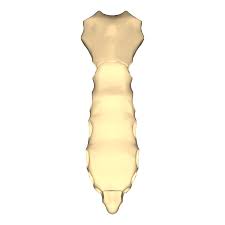Sternum
Anatomical point
- The anterior surface of the manubrium sterni is convex from side to side and concave from above & down.
- The superior border of the manubrium sterni is thick.
- Juglar notch lies centrally.
- Three ill-defined transverse ridge lies anteriorly.
Parts of sternum
- Upperpart is manubrium sterni
- The middle part is the body
- The lower part is the xiphoid process
Manubrium sterni
- It is roughly quadrilateral in shape.
- It lies opposite to 3rd and 4th thoracic vertebrae.
- It is the thickest and strongest part of the sternum.
Features
- Two surfaces - Anterior surface and Posterior surface
- Four borders- superior, inferior, and two lateral borders
Anterior surface
Attachment
- Sternal head of the sternocleidomastoid and pectoralis major muscles are attached on each side.
Posterior surface
Attachment
1. Two muscles are attached on each side
- Sternohyoid at the level of the clavicular notch
- Sternothyroid at the level of the facet for the first costal cartilage
2. The lower half is related to the arch of aorta
- The upper half is related to three branches of the aorta
i.e brachiocephalic artery left common carotid artery, left subclavian artery, and left brachiocephalic vein.
Upper border
- It represents a notch called suprasternal notch or jugular notch
- It provides attachment to the interclavicular ligament.
- Either side of the clavicular notch there is a suprasternal notch that articulates with the clavicle to form the sternoclavicular joint
Lateral border
- Upper facet articulates with the first costal cartilage to form the primary cartilaginous joint.
- Lower demi facet along with other demi facets in the body of the sternum articulates with the second costal cartilage to form secondary cartilaginous joints.
Lower border
- It articulates with the upper end of the sternum and forms manubriosternal joint which is a secondary cartilaginous joint.
- The manubrium makes a slight angle with the body at a junction called the sternal angle or angle of Louis.
Body
- The upper end forms the manubriosternal joint.
- Lower end articulates with the xiphoid process to form a secondary cartilaginous joint called the xiphisternal joint.
- On the anterior surface three faint transverse ridges present called sternebrae.
- Lower parts of its posterior surface give origin to the sternocostalis muscle.
- Its lateral border articulates with the 2nd -7th costal cartilage to form a plane type of synovial joint i.e. is chondrosternal joint.
Xiphoid process
- Its anterior surface provides insertion to the medial fibers of the rectus abdominis.
- Its posterior surface gives origin to the sternal fiber of the diaphragm.
- Its tip provides attachment to the upper end of the linea alba.
Importance of sternal angle
- It's an important surface bony landmark.
- Corresponding to this angle second costal cartilage articulate which helps in counting the ribs.
- It lies at the level of the intervertebral disc between the T4 and T5 vertebrae.
- Ascending aorta ends at this level
- Arch of aorta begins and ends at this level.
- Descending aorta begins at this level.
- The trachea bifurcates into the right and left principal bronchi at this level.
- Pulmonary trunk divides into the right and left pulmonary arteries at this level.

Comments (0)